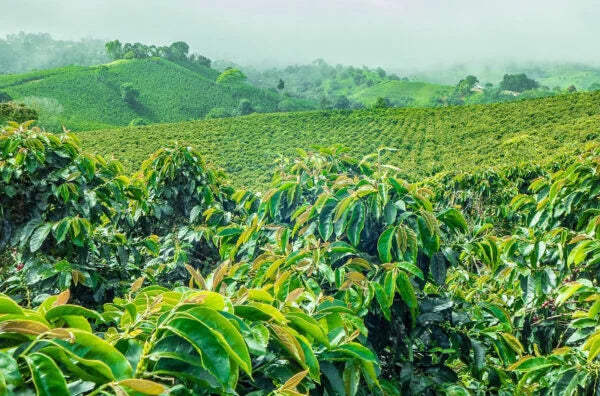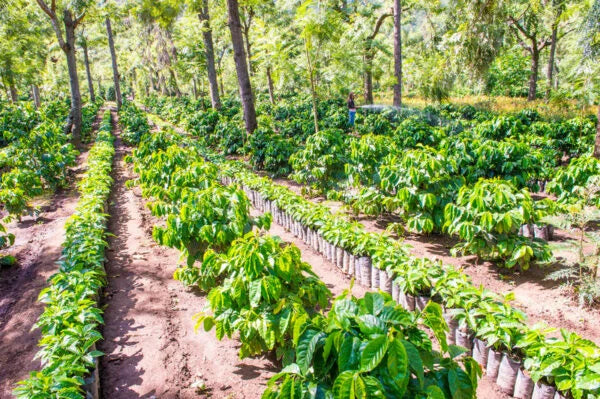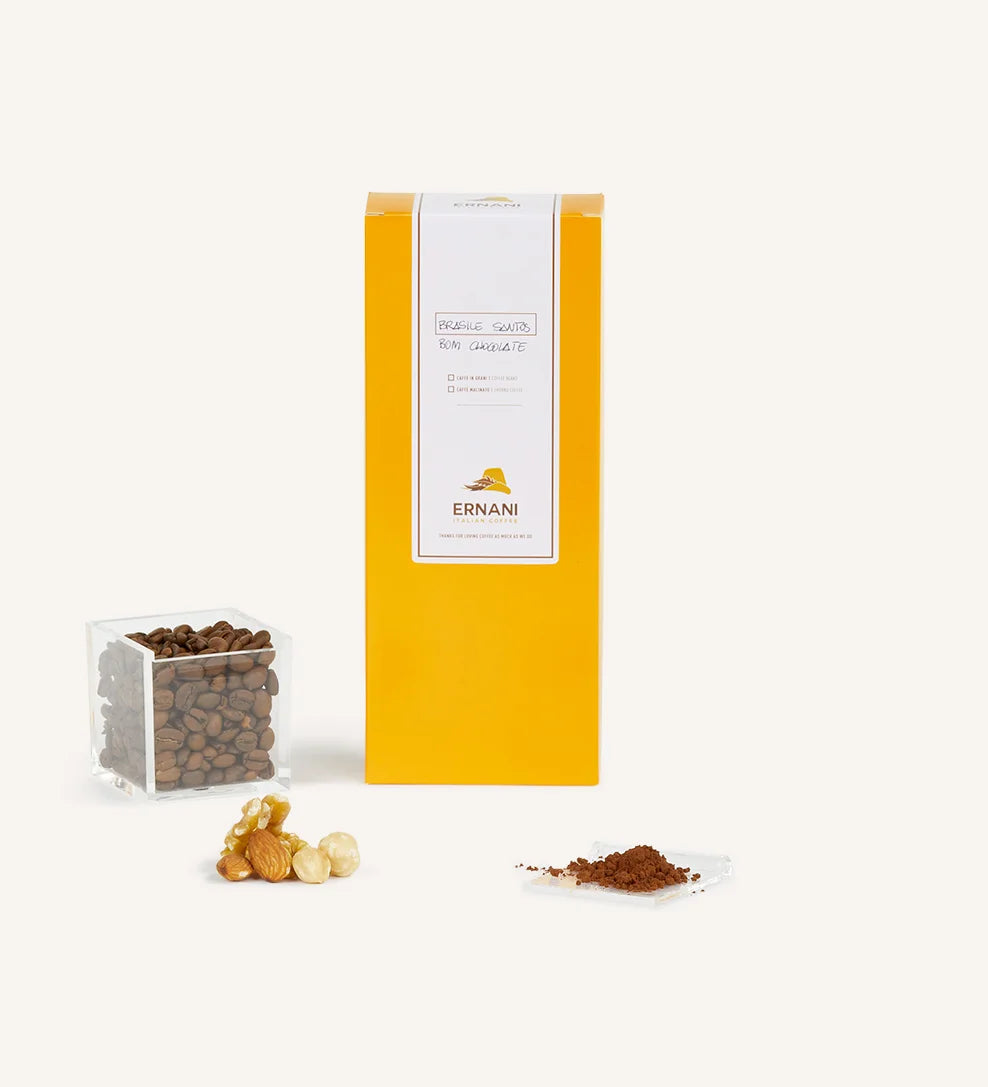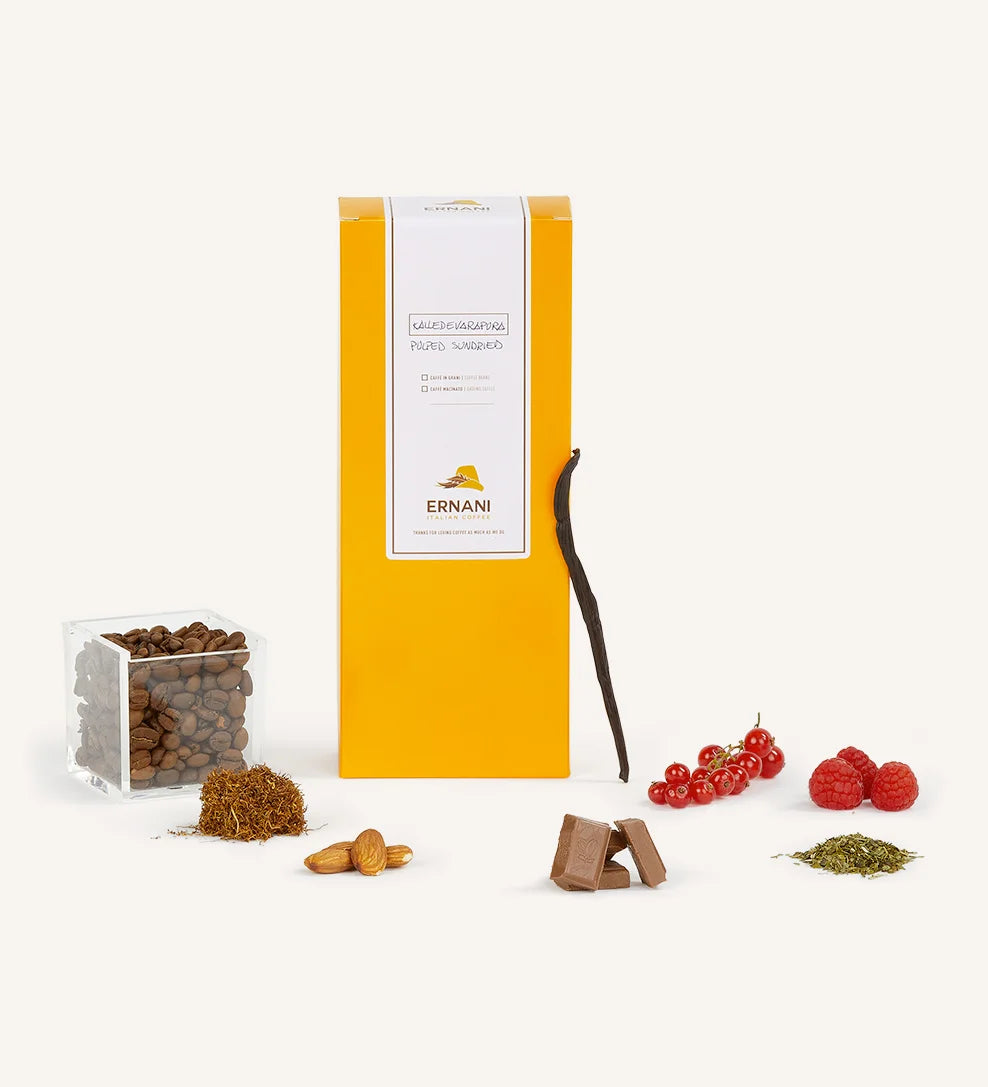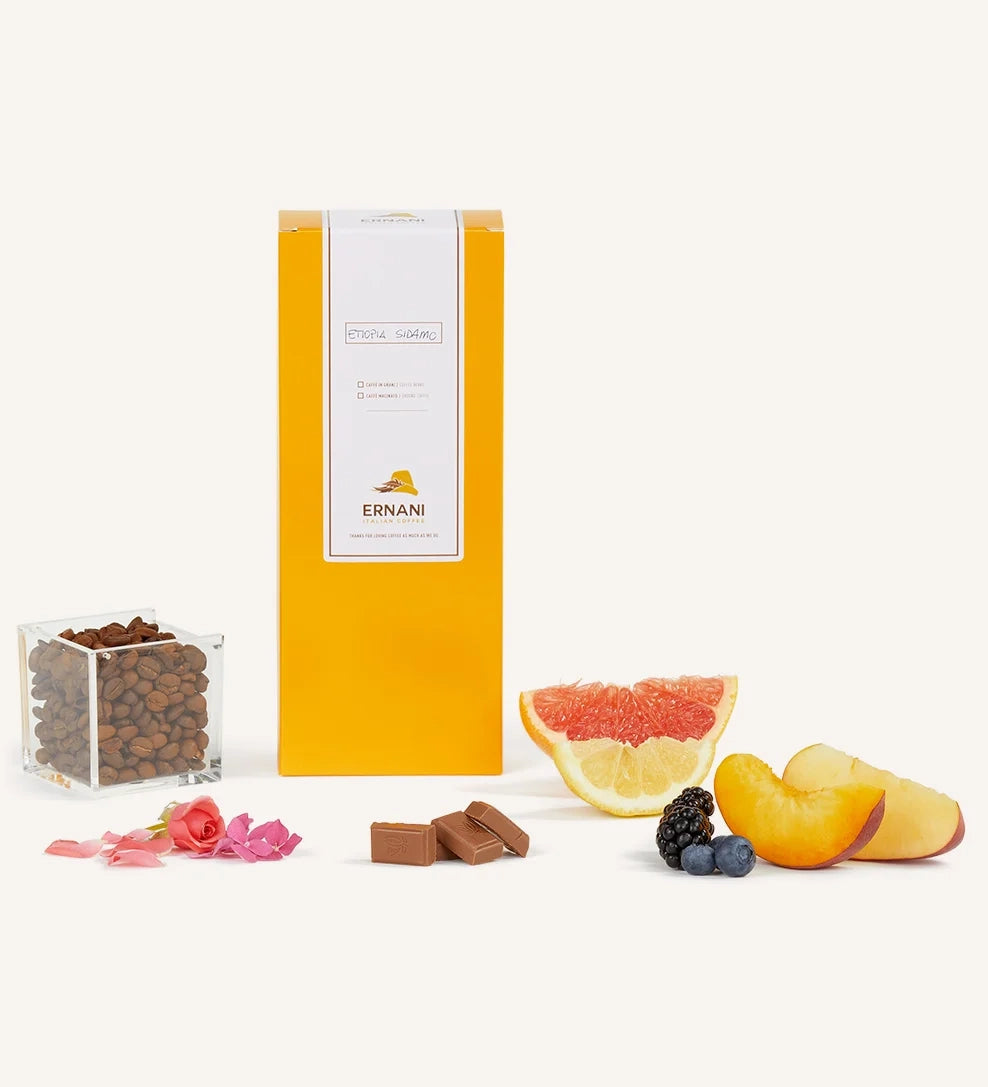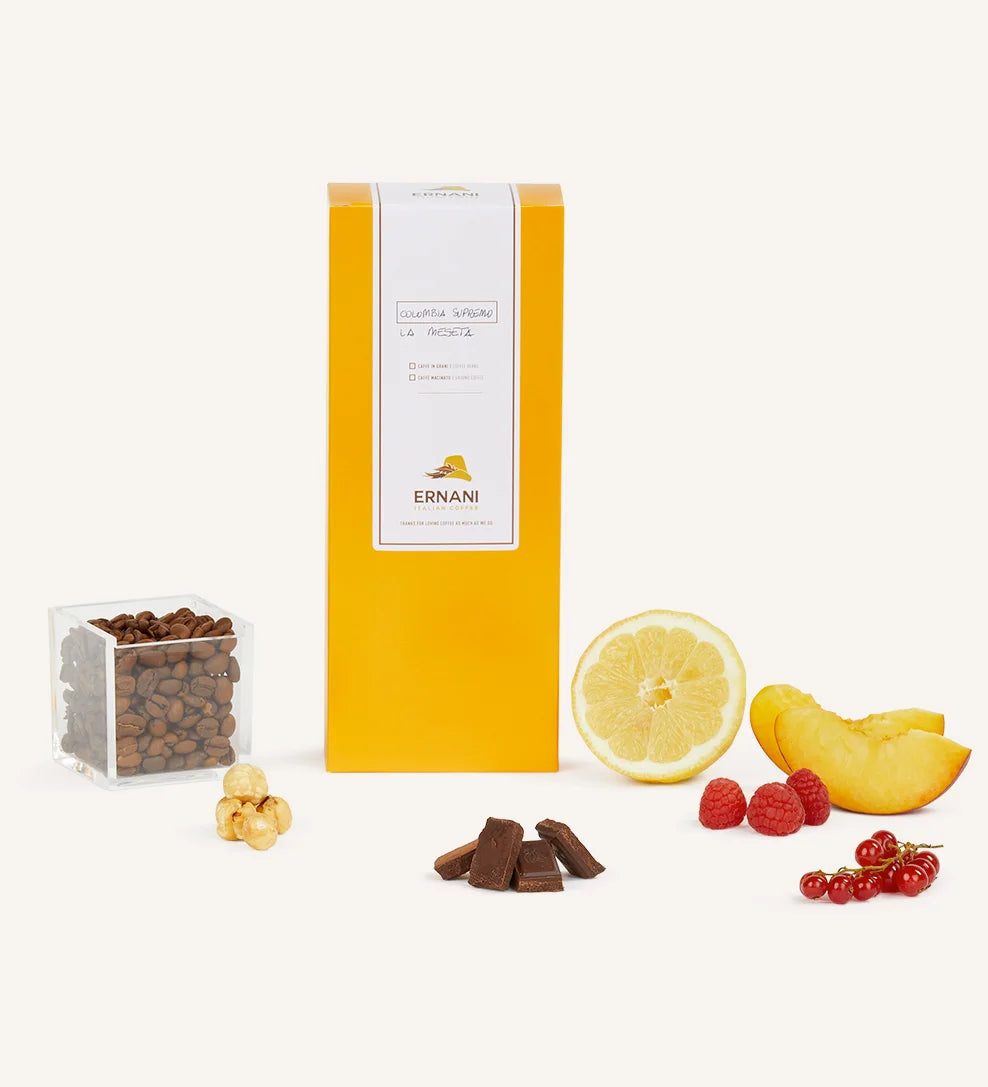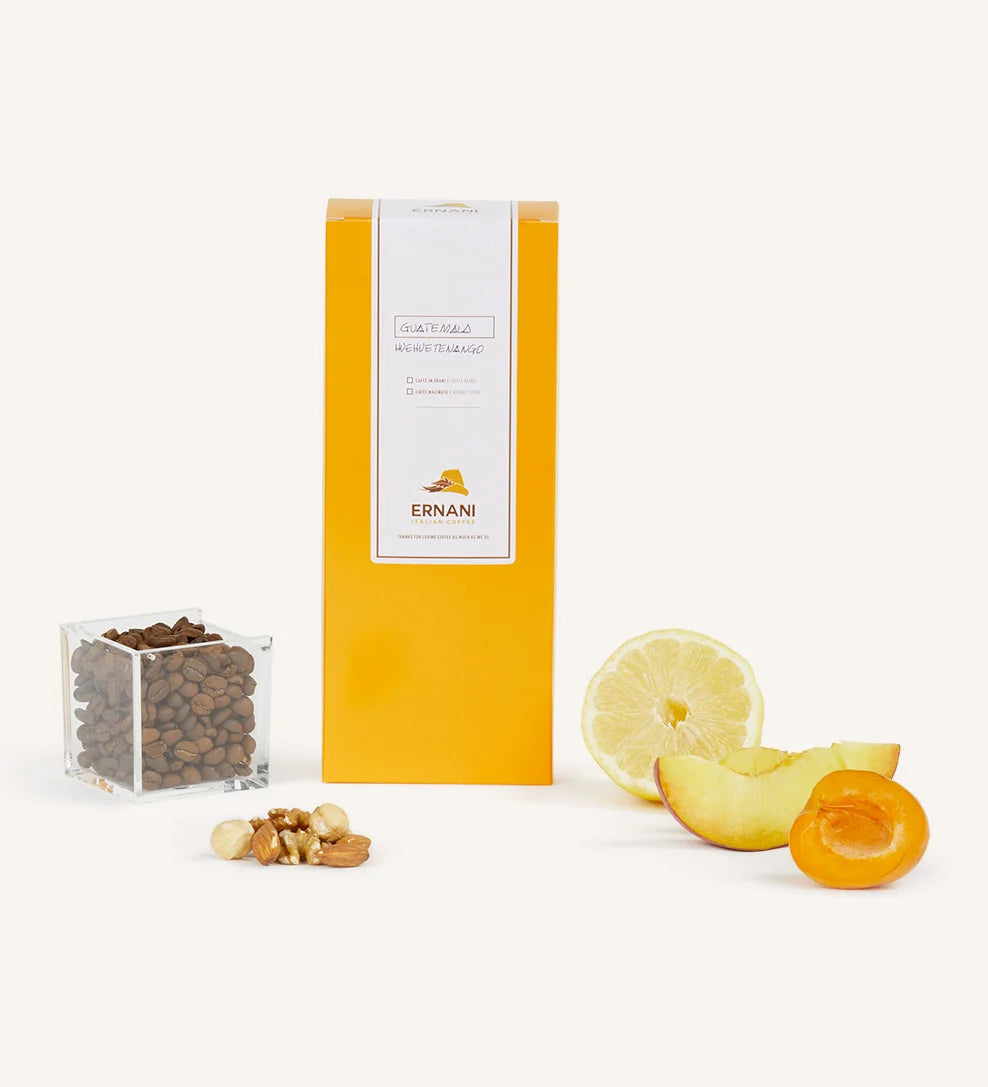
Guatemala Huehuetenango - Specialty coffee - 250g
Save up to 10% by choosing periodic delivery
Description
A sweet, fresh and creamy single origin, with notes of ripe fruit and chocolate
The single-origin Guatemala SHB Huehuetenango is a gourmet coffee of Arabica quality.
Grown at 1350 m above sea level.
Expert growers manually harvest the drupes, containing the seeds, using the picking method, and then re-check and re-select all the collected cherries.
They are then processed using the washed method, which gives a pleasant, fresh acidity in the cup, balancing the sweetness of the ripe fruit.
Fruit trees grow mostly around the plantation. It's thanks to these that the raw beans develop a wide array of aromas, ranging from strawberry, plum, peach, apricot, and citrus.
-
On the nose: great aromatic intensity
-
Taste: Sweet notes of red fruits, plum and peach are immediately noticeable, which also bring a soft and pleasant malic acidity, which fades in favor of the sweet notes of milk chocolate.
Ernani's advice: for espresso, use a dose of 8.5 g per dose.
Suitable for
Those looking for a balanced, sweet and fresh single origin, like a cuddle
Technical data sheet
- Aromatic notes: strawberry, plum, peach and chocolate
- Intensity: 7/9
- Body: 5/9
- Sweetness: 5/9
- Bitterness: 3/9
- Acidity: 6/9
- Aromatic intensity: 7/9
- Roasting: medium
- Suitable for: those looking for a balanced, sweet and fresh single origin, like a cuddle
- Origins: Guatemala
- Location: Locality, Hehuetenango, Guatemala
- Altitude: 1350m above sea level
- Harvest type: picking
- Type of processing: washed
- Variety: Arabica
- Expert Rating: 80/100
Thanks to the medium roast, the carefully selected raw coffee beans can express themselves to their fullest, releasing all their natural aromas without ever being overly bitter. Try it without sugar, it's incredible!
The coffee is stored inside a sealed bag, self-protected with a one-way valve, which allows the coffee to degas, preventing oxygen from entering, which would otherwise oxidize it. This keeps the coffee beans fresh and aromatic even after several months.
Notes for the 250g grain pack:
- Roasted coffee beans
- Packaged in a protective atmosphere of food-grade nitrogen with a one-way valve
- 250 g net weight
Notes for the 250g ground pack:
- Coffee beans roasted and then ground
- Packaged in a protective atmosphere of food-grade nitrogen with a one-way valve
- 250 g net weight
History of coffee
Today we travel to Guatemala, a volcanic region in Central America, called by Guatemalans themselves the “Land of Eternal Spring,” having the essential circumstances and variables to produce sublime quality Arabica coffee.
The volcanic soil, mountain ranges, and cold winds from the Cuchumatanes mountains, which meet the warm air from the Isthmus of Tehuantepec, allow coffee plants to be grown at altitudes of up to 2,000 meters, yielding extremely high-quality coffee!
Arrival of coffee in Guatemala
Coffee cultivation began in Guatemala in 1750 by Jesuit colonizers, and has continued to this day with exports of four million sacks, and of the best quality.
Coffee cultivation took about 100 years to spread consistently throughout the country. It was the government that distributed about a million beans in 1868 and established the Commission for the Cultivation and Promotion of Coffee, to educate and encourage coffee production, while also establishing quality standards and work processes.
Thanks to this, by 1880, coffee had become the true backbone of the country's economy, accounting for around 90% of exports.
Coffee area
In Guatemala, coffee growers are typically smallholders who work independently or are loosely connected by proximity and cultural ties. Most farmers belong to one of the more than 20 indigenous groups recognized by the state, representing a great cultural and linguistic diversity.
Only a few others have formally affiliated with cooperative associations.
The producing areas are modest in size, and offer very different regional organoleptic profiles, thanks to the different varieties and microclimates.
We focus particularly on the Huehuetenango region, which translates to “place of the ancients” or “place of the ancestors,” and was the former capital of the Mam kingdom until 1525.
The indigenous peoples, who make up the vast majority of the inhabitants, descend from different Mayan peoples, each with a distinct culture and language.
This area is located in the northwestern part of Guatemala, bordering Mexico, and has an extraordinary variety of ecosystems, from subtropical humid forests to pine forests, as well as having the highest non-volcanic mountains in Central America.
All this gives life to a coffee with a marked acidity, accompanied by fruity or even vinous notes, if grown above 1800 meters.
And that's exactly what our Guatemala Huehuetenango SHB is: a coffee with good acidity, characterized by notes of yellow-fleshed fruit and hints of red berries, accompanied by sweet notes of milk chocolate!
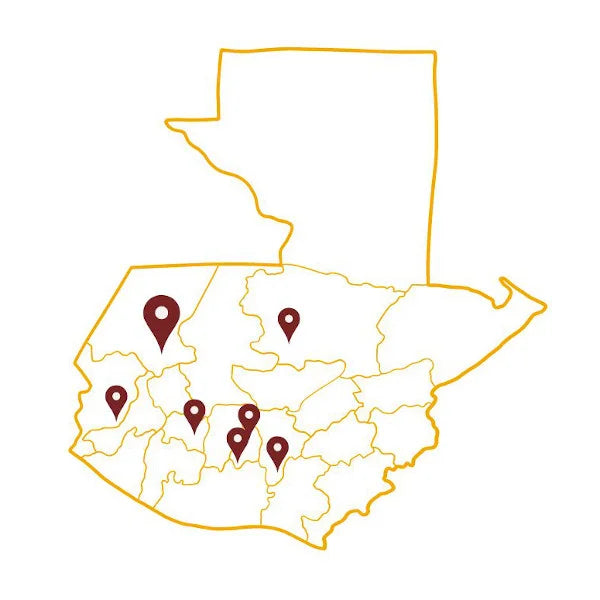
Other coffee-growing areas are:
- San Marco, the hottest and rainiest of the regions. Rain presents a major challenge during the sun-drying process. Here, the coffee is delicate, floral, and fruity;
- Atitlán boasts several nature reserves established to preserve the area's biodiversity and help prevent deforestation. The nutrient-rich soil and winds blowing from a nearby lake create a unique microclimate, giving it surprising aromatic notes and a full body.
- Coban, with its lush rainforest and humid, foggy climate, is a remote and hidden area that produces coffee with unique and delicate fruity notes;
- Fraijanes is an area with fairly regular volcanic activity, which benefits the soil in many ways but also endangers the lives of many growers. Here, the climate changes from hour to hour, giving the wine a pronounced acidity and a well-defined body;
- Antigua is the most famous of the areas, renowned for its cities with Spanish architecture, a UNESCO World Heritage Site. In 2000, it also obtained the Denomination of Origin under the name "Genuine Antigua Coffee." The coffee here is more balanced and sweet;
- Finally, the Acatenango Valley is a more recent coffee-growing area, where beans are grown between 1,800 and 2,000 meters above sea level. This is thanks to an artificial forest that protects and strengthens the coffee plants, as well as the Volcan de Fuego volcano, which provides the soil with important nutrients. All this makes the coffee particularly acidic and persistent over time.
In general, Guatemalan coffees are characterized by a wide range of flavors: from the lightest, very sweet, fruity and complex, to the richest cups with strong chocolate notes.
I can't wait to backpack around Guatemala, talking to locals, learning about their diverse traditions and languages, and sampling their coffees, savoring them to the fullest and discovering the diverse flavors of their lands, nestled in small, diverse microclimates and ecosystems that are unique in the world!
Our Guatemala Huehuetenango SHB Specialty Coffee is excellent in every extraction: from espresso, to moka pot, to filter coffees for percolation and infusion.
Find out how to best prepare it with all the tools here.
Have a good trip!
Curiosity!
If you want to travel to Guatemala's plantations, I recommend the period between August and October, to see the plants full of fruit and their subsequent harvest!
Coffee is also classified by region of origin and altitude of cultivation. For this reason, the following acronyms are used:
- Prime: grown at 750-900 meters
- Extra Prime: grown at 900-1050 meters
- Hard Bean Seeds: Grown at 1050-1220 meters
- Hard Bean: grown at 1220-1300 meters
- Strictly Hard Bean: above 1300 meters. That's why our Guatemala Huehuetenango bean bears the acronym SHB, precisely because it was grown between 1350 and 1500 meters above sea level!
